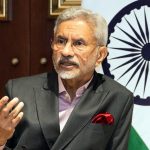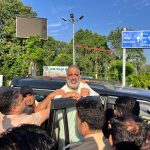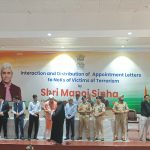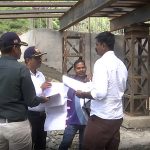The weekly edition of ‘Young India’ in its April 1931 issue carried the message of Father of Nation Late Sh. Mohan Dass Karam Chand Gandhi. The message read as, ‘the cities are capable of taking care of themselves. It is the villages we have to turn to. We have to disabuse them of their prejudices, their superstitions, their narrow outlook, and we can do so in no other manner than that of staying amongst them and sharing their joys and sorrows and spreading education and intelligent information among them. It is here pertinent to mention that the Young India weekly journal was published by Mahatma Gandhi from 1919 to 1931 and used by him to spread his ideology of non-violence and resistance against the British Empire.
Late Lala Lajpat Rai, another most prominent leader during India’s struggle for freedom wrote Young India during his stay in the US and it was published there for the first time in 1916. ‘Back to the Village’ was also a National Campaign of Nepal‘s Panchayat regime from 1967 to 1975. It aimed to direct development efforts to rural areas where a majority of the Nepali people live. As part of the program which was originally known as ‘Go to Village’ National Campaign, civil servants and students from the cities were sent to live in rural communities and participate in development work and serve as teachers in village schools. It was one of the major initiatives of Nepal’s King Mahendra who ruled the country from 1955 to 1972.
The nation-building process can be completed only when we begin from the bottom of the pyramid. Mahatma Gandhi had said that India lives in its villages and if we have to transform rural India, the peoples at the grassroots must be empowered. The institutions of local self governance in the form of Panchayati Raj Institutions (PRIs) have been entrusted with the development of the villages. The 73rd Constitutional Amendment (1992) aims at creation of a three-tier Panchayati raj structure at district, block and village levels. Unfortunately the provisions of 73rd amendment have not been implemented in letter and spirit by most of the states. Still most of the states and UTs have not devolved all the 29 subjects listed in the 11th schedule of the Constitution along with adequate devolution of funds and functionaries to Panchayats at district, block and village levels as mandated in the 73rd Amendment.
The third tier government must be enabled to function focusing on good governance, equality, socio-economic justice and all-round welfare of the villagers. People must be empowered to participate in decision making processes, enjoying equality, liberty, fraternity, fundamental rights and basic human needs. Constitutional provisions must be supplemented by adequate checks and balances, led by vigilant, responsible and dedicated political leadership. Based on the philosophy of our Father of Nation of taking care of villages and to empower the grassroots institutions, the administration of Union Territory of Jammu and Kashmir came up with a ‘Back to Village (B2V)’ programme. The programme is aimed at increasing outreach, transparency and delivery by involving the peoples of the state and government officials in a joint effort to deliver the mission of equitable development.
The programme focuses on energising Panchayats and directing development efforts in rural areas through community participation. Till date three phases of B2V have been completed and by the time the article is being written, the preparations for fourth phase of B2V are in full swing. The Phase-I was an introductory and interactive programme to understand the people’s grievances and demands. The Phase-II focused on the devolution of powers to Panchayats and tried to understand how these Panchayats are functioning and what are the grievances and demands. Phase-III was designed on the format for grievance redressal. All the twenty Deputy Commissioners have been given direction by the UT administration to ensure effective coordination at all the levels so as to make the 4th Phase a grand success on the lines of earlier three phases. As much as 70 minister of the Union of India are visiting different and distant remote locations of the UT to instill a sense of inclusiveness and confidence among masses.
Apart from the Union Ministers, officers of Central Government are also likely to participate in the activities to be conducted as part of the programme. The Administrative Secretaries, who are also the Mentors of different districts of the Union Territory, have also been told to visit their respective districts during the Phase-4 of the B2V programme. Such is the name and fame of this public outreach programme that it has even got a mention by the Hon’ble Prime Minister of the country Sh. Narendra Modi in his monthly grassroots connect series ‘Mann-Ki-Baat’. Hon’ble PM has mentioned it as a festival of development, public participation and awareness.
October 15 to 26 has been designated as the preparatory phase of the fourth phase of the government’s Back to Village (B2V) programme under ‘Jan Abhiyan’ that is to commence from October 27. Every department has been asked to decide on at least one tangible deliverable to be achieved during the Jan Abhiyan. This tangible deliverable includes ensuring that any scheme or activity is completed or complete implementation of a project or debottlenecking of a major initiative or kick starting a new initiative or major project or activity. The 11 days long action packed preparatory phase in the form of Jan Abhiyan, at present in full swing across the Union Territory had a target to deliver 85 people centric schemes by 35 departments that included issue of eight lakh Ayushman cards, 2.5 lakh UDID cards, two lakh e-Shram cards and 30,000 land passbooks to the applicants.
The compaign also focused on youths, their skills and entrepreneurship development, self-employment, good governance, and Panchayati Raj along with ‘Nasha Mukt’ and ‘Rozgar Yukt’ Jammu and Kashmir. During the campaign, people also obtained domicile certificates, self-employment loans, Health Golden Cards, pension payments, and digital certificates through an online mode besides verification of their land records. Digital camps were also held in every Panchayat and at J&K Banks counters in every block. Several important actions were also completed during the Jan Abhiyan campaign. For the fourth phase of B2V, the Chief Secretary of UT Dr. Arun Kumar Mehta has also suggested 12 points for planning activities. These points include Nasha Mukt Abhiyan, functioning of Patwaris and Village Level Workers (VLWs), availability of officers in Panchayats, functioning of school complex system, Amrit Sarovars, Swachh Gram, convergence meetings (once in a month in villages where all departments are present).
The institute with which the author is affiliated also left no stone unturned in ensuring that the vision and mission of B2V is accomplished through its various frontline extension institutes, the Krishi Vigyan Kendra’s (KVKs). SKUAST-Kashmir under the dynamic leadership of Hon’ble Vice Chancellor Prof. Nazir Ahmed Ganai and supervision of Worthy Director Extension Prof. Dil Mohammad Makhdoomi ensured organization of Kisan Mela, Fruit shows, awareness and sensitization programmes on promotion of Integrated Farming Systems, Natural Farming, Organic farming and climate resilient technologies, skill development drives, promotion of various collective organizations like FPOs, various programmes for farm women and youths of the region and many other activities related to agriculture and allied sectors through various KVKs located in different districts of the valley.
Gone are the days when people had to wait for hours in queues in government offices. Compaigns like ‘Jan Abhiyan’ and programmes like ‘Back to Village’ are next generation service delivery mechanisim which has empower people in the true sense by eliminating all the hurdles in the delivery of effective services to them. Successful democracies depend upon how the masses are involved in the developmental process, how they are accessed and assessed, how their grievances are redressed and to the extent their voice finds place in the higher levels of hierarchy. Unfortunately, democracies often suffer from a big gap between the administration and the masses. Outreach, Inclusion and Popular Participation are still an issue with many of democracies.
Democracy means listening to the people at their doorsteps, understanding the circumstances in which they are living, feeling a pinch of the difficulties that impact their lives, and finding a way out of it. This is the essence of ‘Back to Village; initiative of the UT of Jammu and Kashmir. The feedback from such initiatives if properly addressed to have the potential to change the whole dynamics of this Union Territory. At the same time, it is for the administration of Union Territory of Jammu and Kashmir to ensure that the official commitments made in the previous three rounds of B2V regarding the earlier phases must be honoured otherwise the trust deficit between people and the officials will be widened.
The programme which started with focus on four main goals of energizing Panchayats, undertaking assessment of needs of the villages, collecting feedback on delivery of Government schemes/programmes, capturing specific economic potential besides affording an opportunity to gazetted officers to visit the villages has turned out to be a unique mission, a catalyst for development and a revolutionary step for public centric governance. As Mahatma has already turned 150, his mission and vision of development of villages and mentioned in ‘Young India (1931)’ is being manifested through this prestigious ‘Back to Village (B2V)’ programme of Union Territory administration. In a true sense, it has laid down a strong foundation for the system wherein those at the top of administration and those at the grass roots work in a close cooperation ultimately to empower the people.
(The author is a faculty at SKUAST-K; can be reached at [email protected])








